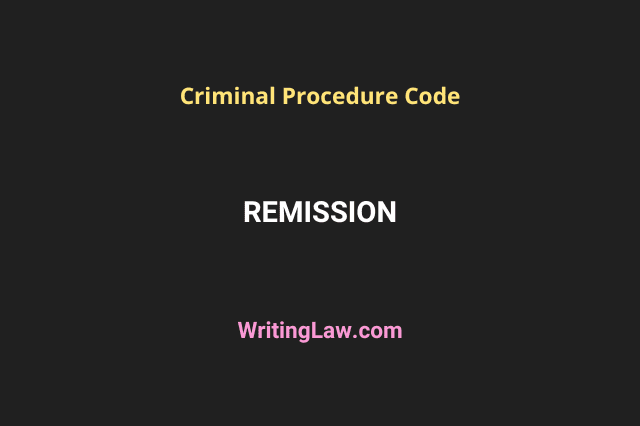
On Indian Independence Day in 2022, the government of Gujarat passed an order directing the release of 11 convicts in the Bilkis Bano case. Following the remission order, a nationwide discussion erupted over what remission is. And how convicts are released early.
Section 3(5) of the Prison Act of 1894 defines the remission system. Remission is defined as shortening the jail sentence of prisoners. As the name implies, remission of a sentence implies that its duration has been reduced without affecting the nature of the sentence.
As an example, 20 years of rigorous imprisonment can be remitted into any lessening years in jail, but cannot change the nature, i.e., rigorous imprisonment to simple imprisonment.
Provisions of Remission Under Indian Criminal Law
Sections 432 to 435 of the Code of Criminal Procedure, 1973, deal with the provision relating to remission.
Section 433 of CrPC talks about the power of the appropriate government to suspend or remit sentences. An offender convicted of an offence may have the whole or any part of his punishment remitted by an appropriate government at any time after the sentence imposed.
However, section 432(2) of CrPC states that whenever a remission request is made to the appropriate government, the presiding judge of the court that convicted or confirmed the conviction must provide his opinion on whether or not to grant the remission request and his reasons for doing so.
The government is authorised to cancel any remission previously awarded if a convict breaches any condition of remissions. The convict may, however, still be arrested and taken into custody by officers.
According to section 433A of CrPC, a person who is sentenced to life imprisonment or whose death sentence has been commuted to life imprisonment shall serve at least 14 years in prison before being eligible for release.
To further understand sections 433 and 433A of CrPC, let us take an example.
A person was convicted under section 304 (para 1) IPC and sentenced to life imprisonment. If the government wants to release this person early, they can do so without the convict’s consent by ordering his release within 14 years of imprisonment. Para 1 here means the first paragraph, which is punishable with life imprisonment and imprisonment up to 10 years.
A person convicted under section 302 of IPC was sentenced to life imprisonment. If the appropriate government wants to remit this sentence, it cannot order the release of such convicts within 14 years of imprisonment because, under section 302, death was also a punishment prescribed by law.
Related: Is Life Imprisonment for the Rest of the Life or 20 Years or 14 Years?
Case Laws on Remission
In Union of India vs V Sriharan AIR 2015 SC, the Supreme Court was specifically asked to clarify the term appropriate government used in sections 433 and 433A of CrPC.
The issue was dealt with by a constitutional bench of the Supreme Court. The Supreme Court distinguishes two categories and said:
- If the sentence is imposed under a law over which the Parliament has jurisdiction over it, then remission should be made by the central government.
- If the sentence is imposed under a law over which the state legislature has jurisdiction, then search specific state is the appropriate government for remission.
In the case of the State of Haryana vs Mahender Singh AIR 2007, the Supreme Court held that there is no right guaranteed in the Constitution, which says that convicts must be released on remission, but a convict must have the right to be considered for release. This will protect the convicts’ constitutional rights guaranteed under Articles 20 and 21 of the Indian Constitution.
In Laxman Naskar vs Union of India AIR 2000 SC, the Supreme Court laid down five questions that should feature in states’ minds before deciding on remission:
- The government will consider whether the criminal offence is an individual act that may not have a negative effect on society.
- Whether there is a chance of repeat offending.
- Whether the convict has lost their potential to commit future crimes.
- The government will also consider the socio-economic conditions of convicts’ families.
- The reason for holding the convicts in prison.
In Union of India vs Sriharan, the Supreme Court ruled that the judge’s opinion, stating the nature of the crime and other relevant facts of the case, would shed light on the circumstances of the case. The factors would show if the inmate was a repeat offender, as well as other relevant facts. This would enable a better decision to be made by the government on whether to reduce their sentence.
Conclusion
Granting remission to the convicted is not a matter of privilege but rather a matter of responsibility on the part of the appropriate government.
The fundamental principle of criminal justice says that “Justice must not only be done but must also be seen to be done.”
A balance must be struck between societal interests and the convict’s interests while granting remission because the commission of a crime affects not only victims but also society, which is the state’s prime responsibility to protect.
In this way, the government must make sure that granting remission does not undermine the nature of the crime committed.
Read Next: Simplifying Remission and Commutation Laws in India
- What Is Remission Under Criminal Law in India? - 12th November 2023
- What Is the Doctrine of Part Performance Under the Transfer of Property Act? - 4th September 2023
- What Is the Places of Worship Act, 1991 and Its Objectives? - 30th July 2023







